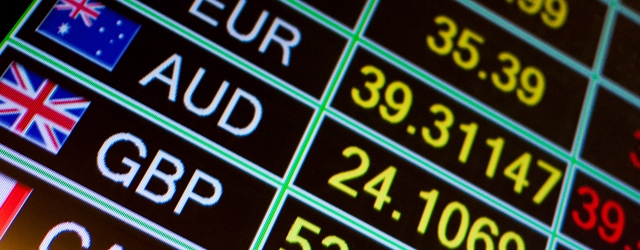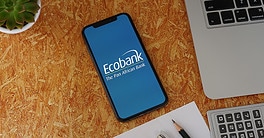Taking the currency risk out of cross-border deals has become a priority for corporate treasurers worldwide.

Everything was going smoothly in the foreign exchange market in the second quarter of 2016, with volatility at unusually low levels—until the Brexit vote on June 23. The British pound plunged less than a week before books closed for the quarter, catching many multinationals off guard.
Brexit served as a swift reminder that unpredictability reigns—volatility could be high one quarter, relatively muted for the following two quarters, then come back with a jolt, according to FiREapps, an Arizona-based company that quantifies the impact that fluctuations in currencies have on corporations. Multinationals have sustained currency headwinds of more than $20 billion globally for five of the past seven quarters, FiREapps says.
In our first-ever Corporate FX Awards, Global Finance honors those companies that have successfully protected their profit margins, cash flows and global competitiveness by expertly managing their currency exposures. The main objective of FX risk management by corporates is to minimize losses, and not to seek profit from currency movements.
This is quite different from the way financial institutions often use derivatives to speculate on the market with no underlying commercial exposure. Corporations typically use a buy-and-hold approach to currency hedging that is more akin to buying an insurance policy.
Most large multinational companies have extensive currency-hedging programs. However, many small and midsize companies do not actively manage FX risk, believing that it is too difficult or expensive. While 69% of large companies in the US hedged their FX risks in 2015, just 39% of small companies did so, according to a report by Chatham Financial, based in Kennett Square, Pennsylvania.
“Hedging programs require sophisticated teams and dedicated resources, which just isn’t an option for many smaller firms,” says Amol Dhargalkar, managing director of Chatham’s global corporate sector. “Larger firms are naturally better positioned to plan and execute a robust internal hedging practice.”
Global Finance’s criteria for the Corporate FX Awards include clearly defined risk management policies, handling of crisis situations, accurate measurement of FX exposure, and cost of hedging.
WORLD’S BEST CORPORATE FX MANAGEMENT
|
GLOBAL WINNERS |
|
|
Best Corporation |
Apple |
|
Best Corporation |
General Electric |
|
Best Corporation |
Dow Chemical |
|
Best Corporation |
Airbus |
|
REGIONAL WINNERS |
|
|
North America |
DuPont |
|
Latin America |
Cencosud |
|
Western Europe |
Air Liquide |
|
Central & Eastern Europe |
PKN Orlen |
|
Middle East |
Etihad Airways |
|
Africa |
Naspers |
|
Asia-Pacific |
Country Garden |
GLOBAL WINNERS
Best Corporation for FX Management
Apple
California-based technology giant Apple generates about 65% of its revenue outside the US. The company is keenly aware of the importance of managing its currency risks. Apple’s corporate finance team makes good use of a comprehensive currency-hedging program to protect uncertain future cash flows. As the dollar continues to rise, Apple relies on currency hedges, which are typically in place for three months to a year or longer, to manage its FX exposure. The main purpose of its use of currency derivatives is to mitigate risk. Nonetheless, Apple recognized $3.5 billion in gains from all of its hedges in fiscal year 2015. The company includes the effects of FX headwinds in calculating its earnings guidance.
Best Corporation for Currency Hedging
General Electric
As a diversified global conglomerate with operations in 130 countries, General Electric has an extensive currency-hedging program. Although it generally hedges the risk of fluctuations in foreign exchange rates, the Boston-based company has strict prohibitions on speculative activity. In addition to hedging currency swings, GE conducts some of its overseas business in dollars, essentially transferring the currency risk to its foreign customers. Nonetheless, the strong dollar negatively affected the company’s earnings in 2015 by $0.05 per share, or about $500 million, while decreasing consolidated revenue by $4.9 billion.
Best Corporation for Use of FX Options
Dow Chemical
A presence in 180 countries, Michigan-based Dow Chemical is an active participant in the FX market. The primary objective of the company’s currency risk management is to optimize the dollar value of net assets and cash flows by keeping the adverse impact of currency movements to a minimum. Assets and liabilities denominated in the same foreign currency are netted, and only the net exposure is hedged. The company’s largest currency exposures are in Europe, Japan and Canada. Dow Chemical uses over-the-counter option contracts, as well as forward contracts and cross-currency swaps, to manage its FX exposure.
Best Corporation for Use of FX Forwards
Airbus
With an aircraft order book equal to eight times annual turnover, Airbus maintains a hedging portfolio of $100 billion. The European aerospace company has long struggled with a mismatch between its dollar-based revenues and its euro-denominated manufacturing costs. Airbus must cope as well with a time lag of about eight years between payment commitments and the actual receipt of cash for the products it sells. It typically implements FX forward contracts to lock in the rate at which future receivables are converted into euros. In the first nine months of 2016, Airbus added new hedge contracts of $15.3 billion, of which $14.4 billion were forwards.
REGIONAL AWARDS
BEST CORPORATIONS FOR FX MANAGEMENT
NORTH AMERICA
DuPont
Delaware-based DuPont, which plans to merge with Dow Chemical, has operations in about 90 countries. The primary currencies for which the company has an exchange rate exposure are the euro, the Brazilian real, the Chinese renminbi and the Japanese yen. DuPont uses forward exchange contracts to offset its net exposures, by currency, related to the foreign-currency-denominated monetary assets and liabilities of its global operations. As part of its financial risk management process, DuPont continuously evaluates the relative credit standing of all of the financial institutions that serve it and monitors actual exposures against established limits.
LATIN AMERICA
Cencosud
Cencosud, the biggest retail company in Chile, has large operations outside of the country—including Argentina, Brazil and Colombia—and maintains a large part of its financing in dollars. The majority of the company’s financial debt is covered using cross-currency swaps or other exchange rate hedges. Cencosud operates supermarkets, as well as department stores, shopping malls and home improvement centers. Foreign exchange risk is manageable in Chile, owing to the widespread use of derivatives and natural hedges for exporters, according to a report by Fitch Ratings.
WESTERN EUROPE
Air Liquide
Because industrial and medical gases are not transported over long distances, most of Paris-based Air Liquide’s products are manufactured in the country in which they are sold. This limits the risk of foreign exchange fluctuations on the company’s operations. Earlier this year, however, Air Liquide found itself in need of a massive hedge for its euro-versus-dollar risk in its $13.4 billion acquisition of US-based Airgas. The French company finalized the purchase in May 2016 with the help of a contingent hedge of its foreign exchange risk. Deal-contingent forwards enable a company to lock in a specific FX rate on the closing of the deal and to walk away from the currency trade without obligation if the deal fails to close.
ADDITIONAL RELATED CONTENT:
Q&A w/Air Liquide: Deal-Contingent Forwards
CENTRAL & EASTERN EUROPE
PKN Orlen
PKN Orlen, a major, Poland-based oil refiner and fuel retailer, assesses its risk exposures on an ongoing basis. The risk related to currency exposure from cash flow is actively hedged using currency futures. Selected elements of balance-sheet exposure to currency risk are hedged opportunistically. Currency risk related to capital spending is hedged using forward contracts. A financial risk committee manages the company’s currency and interest rate risks, as well as emissions allowances, working capital, liquidity and credit risks.
MIDDLE EAST
Etihad Airways
Abu Dhabi–based Etihad Airways uses both FX and interest rate hedging. The company’s FX risk management policy focuses on the forecast net-cash-flow position in each currency over time. Most of Etihad’s debt is denominated in dollars or dollar-pegged currencies. In April 2016, the airline selected US-based OpenLink to support its commodities, treasury and enterprise risk management. Etihad is consolidating its fuel-risk-management and treasury business into a single strategic platform. The airline has a fleet of 120 Airbus and Boeing aircraft and serves 116 destinations worldwide.
AFRICA
Naspers
Cape Town, South Africa–based Naspers is a broad-based multinational with a market capitalization of more than $75 billion. The media and e-commerce company holds a 34% stake in China’s most popular Internet portal, Tencent Holdings. Naspers receives 77% of its revenue from abroad. A significant portion of its cash obligations, including satellite leases and pay-TV contracts, are denominated in dollars. The group generally covers forward 100% of firm commitments in foreign currency for a minimum of one year, and up to two years in the pay-TV business. Naspers hedges its net position in major foreign currencies with forward exchange contracts. Where the group has surplus funds offshore, it spreads them among currencies to limit exchange-rate risk and to get the best possible interest rate.
ADDITIONAL RELATED CONTENT:
Q&A w/Naspers: Diversity Quells Volatility
ASIA-PACIFIC
Country Garden
The depreciation of the renminbi has been a wake-up call for China’s real estate companies, which have been among the country’s biggest borrowers of dollars. They have discovered currency hedging and are taking steps to better manage their FX exposure. Country Garden, a property developer based in Guangdong Province, was one of the first Chinese real estate companies to use currency hedges to cover some of its dollar exposure. The company is also seeking to use more local financing for local projects. It has issued domestic bonds and used the funds to buy back some of its offshore dollar-denominated debt.



